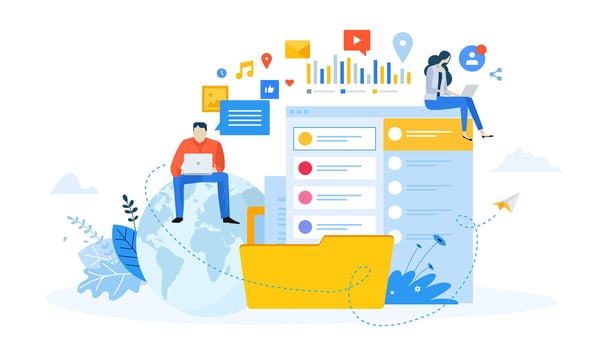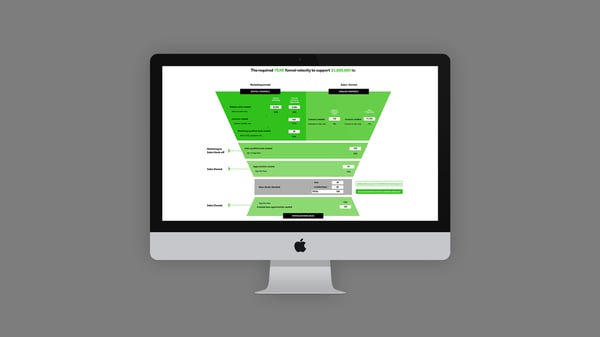Get WISER with Your AI Prompts - A guide for sales managers
Everyone’s wittering on about AI like it’s the second coming. But here’s the rub: if you give it half-baked prompts, you’ll get half-baked answers....
3 min read
 Chris Fell
16/07/2019 9:30:00 AM
Chris Fell
16/07/2019 9:30:00 AM

Let’s start with a definition: What exactly is a marketing plan? It’s the detailed sequence of tactics and activity that achieves your marketing strategy. It’s how you go from strategy to action. It’s what tells your team what to do and in what sequence, when they arrive at work each day. So it’s important!
And it’s part of a sequence. Business objectives inform your go-to-market strategy, which informs your marketing tactics, which inform your marketing plan.
We think of these four stages as links in a chain, break one link, and you break the chain, and you lose the relationship.
This is very important in our view. At g2m we are known by our clients for our mantra; “No more random acts of marketing!” Random campaigns that are not linked to the overarching go-to-market strategy and the business’s revenue objectives, waste money, fail to achieve the best results and destroy the credibility of the marketing function with the corner office.
“No more random acts of marketing!”
If we start at the end of the chain and work our way backwards, the marketing plan is the sequence of activity, that uses the agreed tactics, that are driven by the go-to-market-strategy which is informed by the business’ objectives. Keep these relationships intact, and you will ensure alignment between your daily activity and your firm’s business goals.
If the concept of the links in a chain holds true, it has implications for the structure of your marketing plan. To build a marketing plan, you need to know the following:
What is your revenue goal for the next year and ideally the next 3-years? What is the rate of growth your firm expects? From where is the revenue expected to come? Existing customers or new business? From markets you already play in, or from new markets?
There are four key questions you must answer:
Who is your Ideal Customer Profile (ICP). What segments are in and out? Within those ICPs, to whom do you sell, who are your buyer personas? What are their goals and challenges that you service better than anyone else?
What products or services solve the target customer’s pain points or will enable them to reach their goals?
Will you be going direct, or using a channel, or both?
Who else solves your chosen persona’s pain points or can help them succeed? What is your unique point of difference?

Will you be going direct, or using a channel, or both?
With the revenue targets clear, you need to work out how fast you need to run your funnel.
In addition to these core numbers, you need to work out which channels will generate the leads:
You should end up with a funnel velocity “map” that looks something like this.

With the target set your monthly reporting should compare your actual results vs the funnel velocity plan.
If this sounds daunting, fear not! You can use our online funnel calculator to help you figure this out.
Now you are clear on the business’s revenue goals, the target audiences who will deliver this revenue, and the volume of activity you will need to generate, you can design the right type and amount of campaigns to hit your goals.
Every campaign you design should start by outlining:
Business is busy, fast-paced and is continually evolving. It is highly likely your beautiful, elegant and carefully crafted campaigns will become irrelevant, or need to develop throughout during the year. That sucks, but it’s the life of the modern marketer!
When we work with clients, we plan out the year with them, but break the activity into 90-day sprints. Each quarter we check back in to find out if the fundamentals changed? If so, we may need to adjust course or run a faster funnel. By keeping the marketing plan relevant, fresh and aligned with the business, it remains a living breathing document - and the spine of your marketing department’s activity.
Use the g2m Funnel Calculator for your marketing plan. This online funnel calculator tool will help you work out your funnel velocity for your marketing plan; feel free to give it a whirl!
Subscribe to our latest news and updates on HubSpot.

Everyone’s wittering on about AI like it’s the second coming. But here’s the rub: if you give it half-baked prompts, you’ll get half-baked answers....

The business world is falling head over heels for AI—and who can blame it? With promises to reduce grunt work, uncover insights, and turbocharge...

Search is evolving - fast. For two decades, SEO has revolved around Google’s algorithm: keywords, backlinks, metadata, and page speed. But with the...